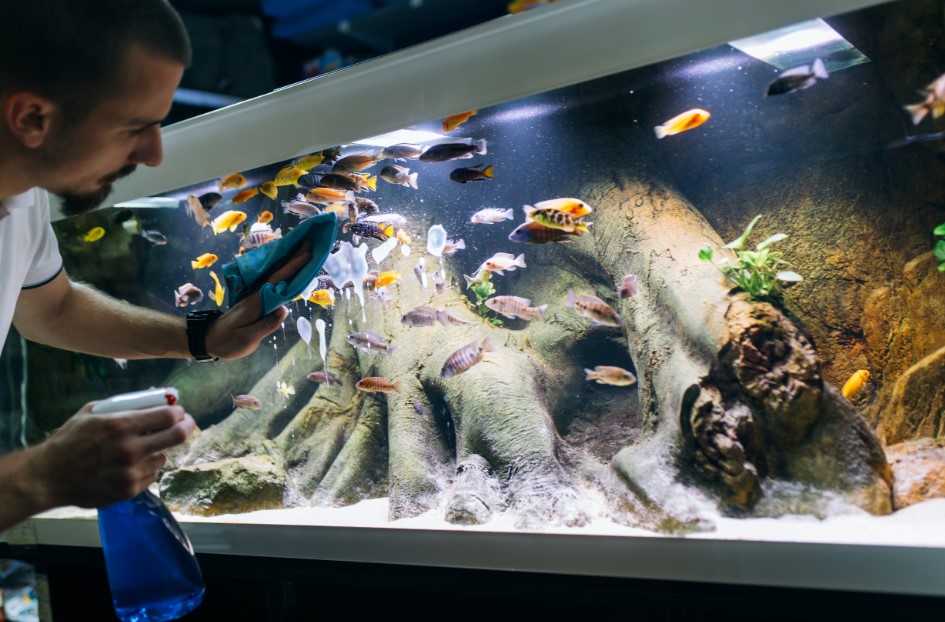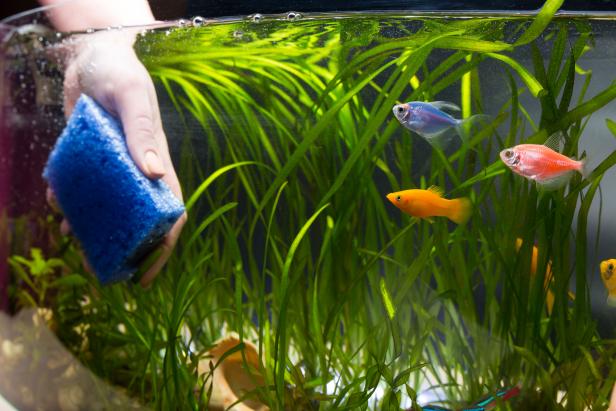Changing the Water in Your Fish Tank
Yes, the most important thing for your new freshwater fish tank is changing the water. Why? Well, water changes involve more than just removing water from the tank and replacing it. You have to consider the condition of the water you are replacing it with, and the amount of water to remove. These can affect the water quality, and the state of your aquarium’s health.
Colonies of beneficial bacteria grow on every surface in the tank. These bacteria are part of the biological filter; allowing them to thrive will help improve the quality of the biological filtration system.
Every time you clean your fish tank, you should remove 10-15% of the water and replace it with fresh, dechlorinated tap water (bowl and small tanks need larger water changes more often). While you are doing this, you should use your siphon to vacuum some of the debris collected in the gravel. If you have an underwater filter it is very important to clean the gravel when you do your water changes every week, or every other week, and this will remove waste particles, and oxygenate the substrate as well, allowing nutrients and oxygen to reach the biological bacteria living on the gravel. Usually, you can clean 25-33% of the gravel when you siphon 10-15% of the water.
What do you need?
- A siphon
- A dedicated brand-new 5-gallon or larger bucket
- A source of water
Place the bucket and the siphon next to the aquarium in preparation for the water change.
Turn off all electricity to avoid any dangers. Heaters can break if exposed to excessive air as it will try to heat the room’s temperature. Filters can go dry if water levels go below the suction tubing.
Place the vacuuming part of your siphon in the tank and start suctioning. How you do this depends on the type of siphon you have. Make sure the other end is below the end in the tank so that gravity pulls down the water into the bucket.
Remove any solid wastes inside the fish tank by gently siphoning the gravel to pick up any settled debris. Imagine a checkerboard on the bottom and clean square by square. Keep the vacuuming end close to the gravel so you won’t suction any fish.
When the bucket is almost full remove the tubing from the fish tank to break the siphon, and dispose of the water.
After removing the desired amount of water, you can start adding your fresh water. If you add water from the bucket, rinse it first and use any conditioner while the water is still in the bucket. If you use an auto-filling siphon that connects to your faucet, dissolve the conditioner in a bit of water and add it as soon as the tank is full.
Plug any electrical equipment that you unplugged before.
Just some notes:
Siphon-Use a gravel cleaning siphon whenever you do a water change to remove all the trapped particulate from the gravel and dissolved pollutants.
- Although I love to use the auto-filling siphons and so far I have not had any problems, be aware that adding untreated tap water into your tank can lead to disaster. You should precondition the water before adding it to your system.
- Always use water at room temperature, never use hot water to adjust temperature. Hot water contains a greater quantity of heavy metals like copper and lead. Heavy metals can be removed from tap water by the addition of “slimy” water conditioners. These products contain chemicals that will bind these metals, rendering them harmless. Carbon and certain resins will also remove heavy metals from the water.
- It’s better to do smaller water changes more often than one large water change. Doing this will keep the water quality from changing too drastically.
- You can change the water during cycling. Normal water changes will not affect this process after 2-3 weeks.
- Always allow your tap water to run for at least five minutes before using it. This will help decrease the dissolved
heavy metal content.
Happy fishes!!




